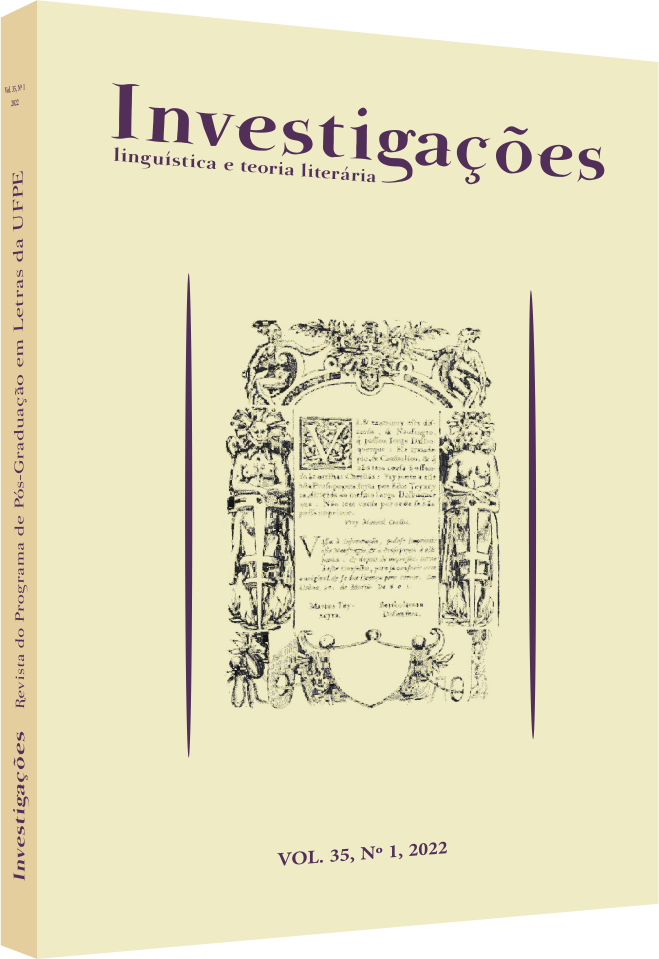O espírito da intimidade, o amor e a vivência d’A menor mulher do mundo: entre Sobonfu Somé e Clarice Lispector
DOI:
https://doi.org/10.51359/2175-294x.2022.254270Keywords:
A menor mulher do mundo, Clarice Lispector, Sobonfu Somé, O espírito da intimidade.Abstract
In a society structurally patriarcal and racist, want to perform one read that put in perspective O espírito da intimidade, by Sobonfu Somé, and the tale A menor mulher do mundo, by Clarice Lispector, evidencing the divergences between West and East. In the tale, the character is seen in a racist way by the westerners because of the eurocentric view that compose the social structure and the social view of the individuals. Therefore, the general objective of this article is to show other epistem seeking to decentralize the eurocentric perception about Black women through the philosophic thinking of the african writer Sobonfu Somé, that studies love.References
ALMEIDA, Silvio. Racismo Estrutural. São Paulo: Sueli Carneiro; Pólen, 2019.
FANON, Frantz. Pele negra, máscaras brancas.Tradução de Renato da Silveira. Salvador: EDUFBA, 2008.
LISPECTOR, Clarice. A menor mulher do mundo. In: LISPECTOR, Clarice; MOSER, Benjamin (orgs.).Todos os contos. Rio de Janeiro: Rocco, 2016. p. 193-200.
NASCIMENTO, Abdias. O Quilombismo: documentos de uma militância pan-africanista. 3. ed. São Paulo: Perspectiva; Rio de Janeiro: Ipeafro, 2019.
SAID, Edward W. Orientalismo: o Oriente como invenção do Ocidente. São Paulo: Companhia das Letras, 2007.
SOMÉ, Sobonfu. O espírito da intimidade: ensinamentos ancestrais africanos sobre maneiras de se relacionar. Rio de Janeiro: Odysseus, 2003.
Downloads
Published
How to Cite
Issue
Section
License
Copyright (c) 2022 Adrielly da Silva Gomes, André Luís Araújo

This work is licensed under a Creative Commons Attribution 4.0 International License.
Authors who publish with Revista Investigações agree to the following terms:
Authors retain copyright and grant the journal right of first publication with the work simultaneously licensed under the Creative Commons Attribution 4.0 International (CC BY 4.0) license that allows others to share the work with an acknowledgement of the work's authorship and initial publication in this journal.
Authors are able to enter into separate, additional contractual arrangements for the non-exclusive distribution of the journal's published version of the work (e.g., post it to an institutional repository or publish it in a book), with an acknowledgement of its initial publication in this journal.
You are free to:
Share — copy and redistribute the material in any medium or format for any purpose, even commercially.
Adapt — remix, transform, and build upon the material for any purpose, even commercially.
The licensor cannot revoke these freedoms as long as you follow the license terms.
Under the following terms:
Attribution — You must give appropriate credit , provide a link to the license, and indicate if changes were made . You may do so in any reasonable manner, but not in any way that suggests the licensor endorses you or your use.
No additional restrictions — You may not apply legal terms or technological measures that legally restrict others from doing anything the license permits.

